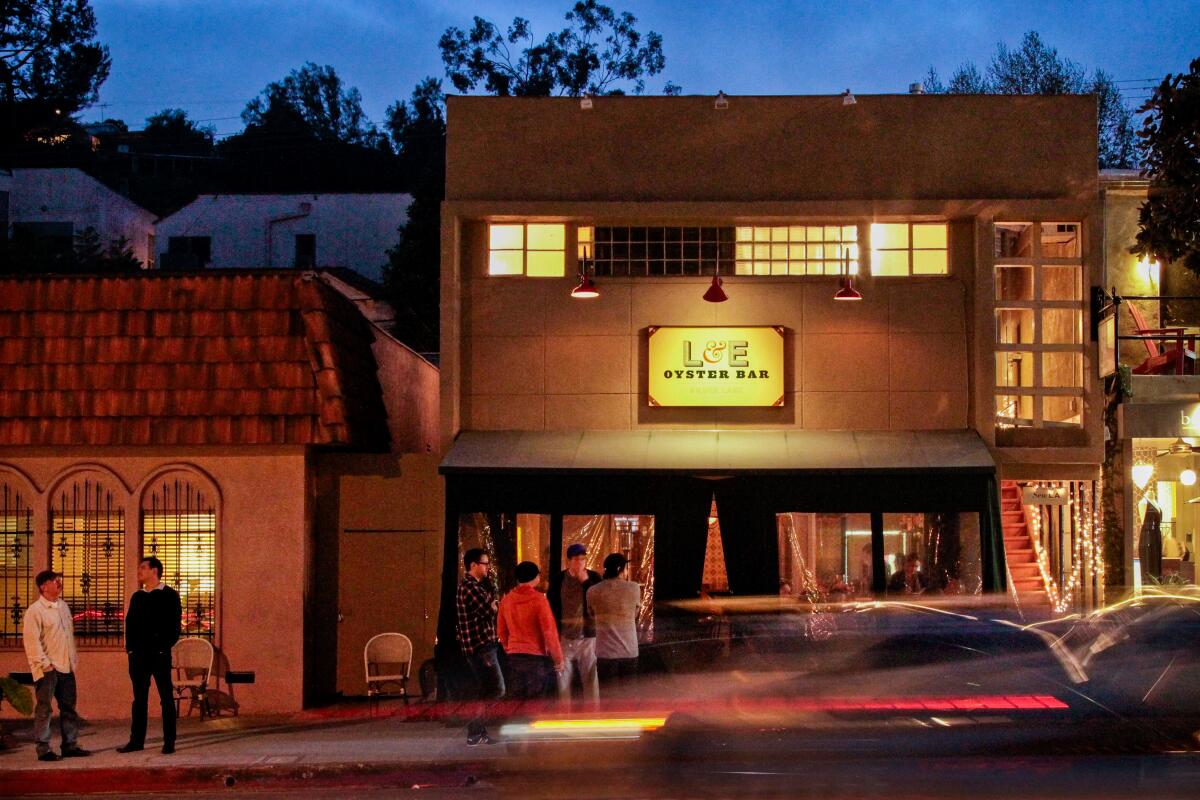The 3%, 5% and 20% fees that you see at the bottom of menus may still be here to stay. There’s only a little time left, but the new law will allow restaurants and bars to continue charging service charges, medical fees and other surcharges, as long as they’re clearly marked for customers to see. The practice is set to be banned starting Monday.
On Saturday, Gov. Gavin Newsom signed Senate Bill 1524, an emergency measure that exempts California food and beverage businesses from Senate Bill 478, a law that took effect in July and targets ticket sellers, hotel and travel websites and other businesses that charge “hidden” or “junk” fees.
Before Governor Newsom signed SB 1524, which was introduced in early June, restaurants and bars were among the affected businesses, and Attorney General Rob Bonta had advised food and beverage businesses to include such fees in their listed menu prices to avoid potential litigation.
“Because of these unfair fees, you don’t know how much you’ll be charged initially,” Attorney General, a co-sponsor of SB 478, said in a statement the day the bill was signed. Bonta could not be reached for comment about the exemptions granted in SB 1524.
Many service industry operators have spoken out in opposition to SB 478, which passed in October, saying they fear that raising list prices during a tumultuous year marked by closures and inflation could lead to loss of customers and patronage. Several restaurateurs told the Los Angeles Times that reviewing or overhauling tip and surcharge systems could lead to employees losing benefits or closing altogether. The provisions of SB 1524 that allow such surcharges could affect tens of thousands of restaurants across the state.
“We’re more heavily regulated than any other industry, and we’re fighting to survive in a broken system that’s been passed down for decades,” said Eddie Navarrete, co-founder of the Independent Hospitality Coalition, a restaurant advocacy group. “Any additional restrictions will just make things even harder. Things are already difficult. The small restaurant community is moving out in droves. I think it’s a huge relief that they now have just one less problem to deal with.”
Navarrete spent weeks campaigning for the passage of SB 1524, writing letters, meeting with more than 35 policy advisors, lawmakers or their representatives, and going door-to-door at the State Capitol to explain how service fees are used in the restaurant industry, whose tip-based employee income differs from most industries affected by SB 478.
Within the industry, surcharges, medical fees, and service charges are regularly used to stabilize wages throughout the dining room and kitchen (where servers often receive tips, but cooks and dishwashers do not) and to offset the cost of benefits such as health care. Companies that charge high service charges, such as 18% or 20%, often state clearly that tipping is not expected.
“I don’t understand why restaurants are saying they need to change their ways. It just seems to me like they’re saying they need to hide the cost of the food for us, and that doesn’t seem right,” said Jen Engstrom, state director for the California chapter of the Public Interest Research Group (CALPIRG), a nonprofit that advocates for consumer interests and protections.
“It feels like you’re being scammed,” she said. “That’s what it feels like. They’re trying to scam you.”
Some local restaurants have been accused of taking advantage of service charges and other surcharges, but several chefs and restaurateurs told The Times that these “bad actor” actors are in the minority.
“As far as I know, every restaurateur that cares in the industry is using it in a very appropriate, responsible and positive way, so if it were to go away, it would be a real disadvantage to everybody,” Cato restaurateur Ryan Bailey told The Times earlier this year.
The new bill, which passed unanimously in the state Assembly and Senate in late June, was co-sponsored by Sen. Bill Dodd (D-Napa), who also co-sponsored SB 478, along with Sen. Scott Wiener (D-San Francisco), Assemblyman Matt Haney (D-San Francisco), Assemblyman Jesse Gabriel (D-Encino) and Assemblyman Cecelia Aguiar Curry (D-Winters).
The movement is backed by the California Restaurant Association and the labor union Unite Here, which represents thousands of hospitality workers in California.
SB 1524 “will allow restaurants to continue to help improve pay equity and contribute to employee healthcare and other employee benefits,” Matthew Sutton of the California Restaurant Association said in a statement, “and importantly, it will ensure that consumers continue to have the power to make informed choices about where they eat out.”
While some restaurant and bar owners are breathing a sigh of relief that service charges will continue, others are frustrated by the government’s sudden change of policy.

In April, ahead of SB 478’s July 1 start date but before the new exemptions for restaurants and bars, L&E Oyster Bar and sister restaurant El Condor built a 4% service charge into their menu prices.
(Ricardo DeArataña/Los Angeles Times)
Following the attorney general’s guidance on SB 478, restaurateur Dustin Lancaster added a 4% surcharge to menu prices at two Los Angeles restaurants, L&E Oyster Bar and El Condor, in April. He said SB 1524 means we won’t be going back to a service charge model, at least for the time being, and that “it’s not that easy to put the cake back on.”
“Sadly, this is an all-too-familiar situation for California restaurants,” Lancaster told the Los Angeles Times this week. “Just like with COVID, they’re tossing us around and expecting us to pivot and change our model again and again, as if it’s no big deal for small businesses. Restaurants continue to close. [at] That’s an astonishing percentage for Los Angeles, and it’s these unnecessary pivots that are the reason California remains the least small business-friendly state in America.”
At Bell’s, a Michelin-starred restaurant in Los Alamos in Santa Barbara County, the owners are closely tracking the progress of both state Senate bills and waiting for a final decision before deciding whether to eliminate the 20 percent service charge that applies to all nonmanagerial employees.
Bell’s also listed its prices on its lunch and dinner menus, on its FAQ webpage and in the section of its homepage for takeout orders even before SB 1524 was passed. The new law means the restaurant can continue to do this without having to restructure its business model.
Bells owner Greg Ryan told The Times he has listened to and understood customers, lawmakers and his team, and wants to do what’s best for his staff.
For months, practice has felt like a balancing act.
When SB 1524 passed the California Assembly and Senate, there was an immediate outcry on social media and public forums like Reddit, with several anonymous posters commenting that they would stop tipping in retaliation for the exemption. Another Reddit user created a spreadsheet to track surcharges and service charges at restaurants across the state.
A Los Angeles restaurateur, speaking anonymously for fear of retaliation from customers, told The Times that low tips — $1 or 0 percent — have increased over the past month in response to the 3 percent to 4 percent service charges restaurants charge.
“I’m not very happy with this bill,” CALPIRG’s Engstrom said of SB 1524. “I would have preferred if restaurants and bars also had to clearly display their prices up front, making it easier for consumers to compare prices. If I decide to go to a restaurant with my family, I check the prices on the menu or online first.”
While SB 1524’s requirement to disclose fees is a positive, she said it’s not as strong as SB 478, which includes the attorney general’s original guidance calling for service fees to be built into list prices. Engstrom called SB 478 a “great model bill” and said she hopes other states and federal governments will enact similar consumer protection laws without creating as many exceptions for the industry, regardless of how service fees are integrated into their business plans.
“I think [SB 1524] “Unfortunately, it’s kind of a step back, but it’s still transparent,” she said. “You can still see it. You just do the math.”

